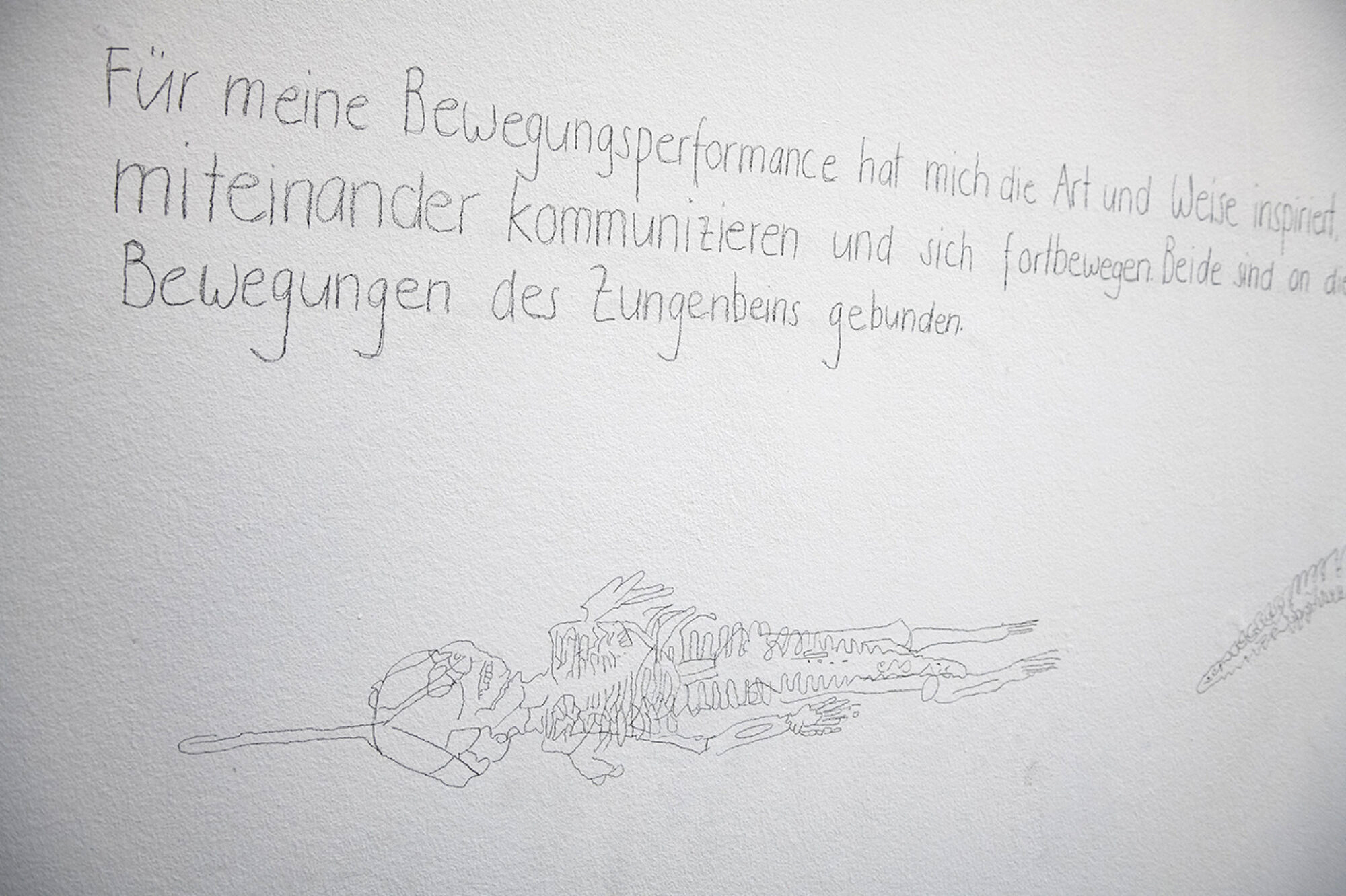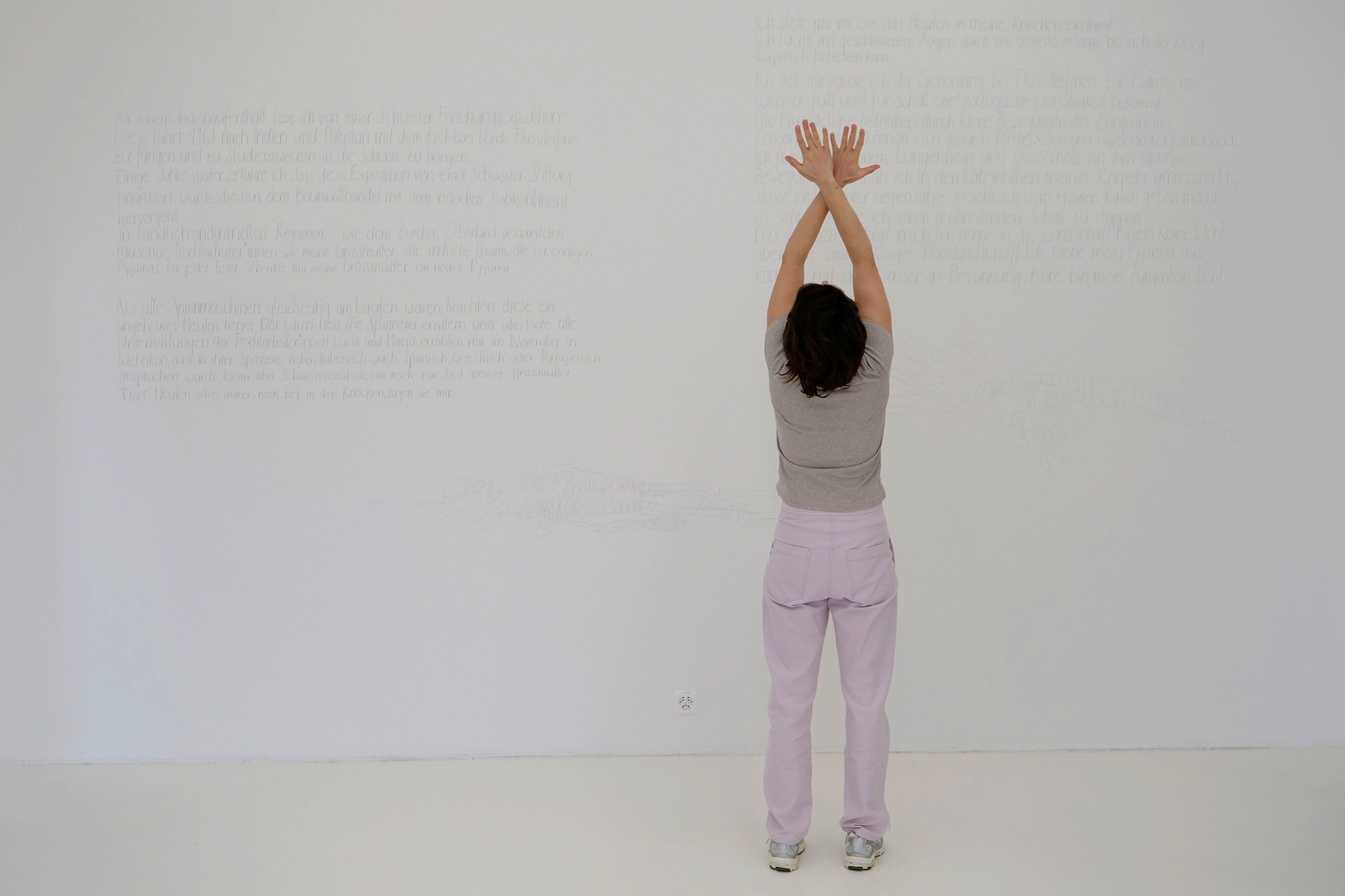Scores for a Ganges River Dolphin and a Textile Worker
Scores for a Ganges River Dolphin and a Textile Worker #1–2 is a performance project by Stefanie Knobel that situates itself at the intersection of classism, postcolonialism, and more-than-human actors. The work is the result of Stefanie Knobel's years of research on cotton and institutional contexts, as well as her ongoing performance and movement practice, which she combines in this project with the perceptions of a quasi-blind river dolphin.
The background to the project is provided by two large-scale expeditions undertaken by a Swiss research team to the Brahmaputra in India and the Indus in Pakistan in 1969. The aim of the Swiss expedition was to capture two blind Ganges river dolphins and bring them to Switzerland for study purposes.1
In December 1969, the local population on the Indus River was hired to carry out this violent capture for the University of Bern. Dolphin hunting is not one of the local activities. Wrapped in a damp cotton cloth, the dolphins were transported to Zurich on a private Swissair flight and then taken to the Institute of Brain Anatomy at the University of Bern in Waldau. The dolphin expedition was generously co-financed by the Swiss Volkart Foundation, based in Winterthur, which emerged from the Volkart brothers' trading company.
During the colonial era, the Swiss company developed into the largest trading company on the Indian subcontinent. Thanks to its extensive expertise in India and the acquisition of know-how in dealing with local actors, the trading company was able to extend its colonial cotton trade on the Indian subcontinent to remote and difficult-to-access regions.2 This expertise was often relied upon by European companies wishing to establish a presence in India, and it can be assumed that the Bern University's Delfin expedition was also based on this pioneering spirit.
From the 1870s onwards, the Volkart brothers managed to penetrate areas of India that were difficult to access, thereby furthering the destruction of the Indian textile industry. In the colonial practices of Swiss transit trade on the one hand, and scientific expeditions on the other, exploitative and violent acts are presented as adventurous pioneering expeditions, concealing the colonial contexts behind them.
It also remains hidden that blind dolphins are extremely sensitive animals and have highly differentiated hearing. Noise is also a problem for Italian textile workers, who were brought to Swiss cotton mills en masse in the 1970s to process cotton sourced from the Indian subcontinent, among other places.
Soundfile for Scores for a Ganges River Dolphin and a Textile Worker #1/#2, 2024/2025
Sources
1 See Giorgio Pilleri: The Secret of the Blind River Dolphins, 1980.
2 See Sven Beckert: Empire of Cotton: A Global History, 2015.
Previous performances and events:

Scores for a Ganges River Dolphin and a Textile Worker #1
Installation with live performances at Aargauer Kunsthaus, Aarau, 2024
Learn more
Installation with live performances at Aargauer Kunsthaus, Aarau, 2024
Learn more

Scores for a Ganges River Dolphin and a Textile Worker #2
Installation with live performance accompanied by a conversation with textile workers at Helmhaus Zurich, 2025
Learn more
Installation with live performance accompanied by a conversation with textile workers at Helmhaus Zurich, 2025
Learn more